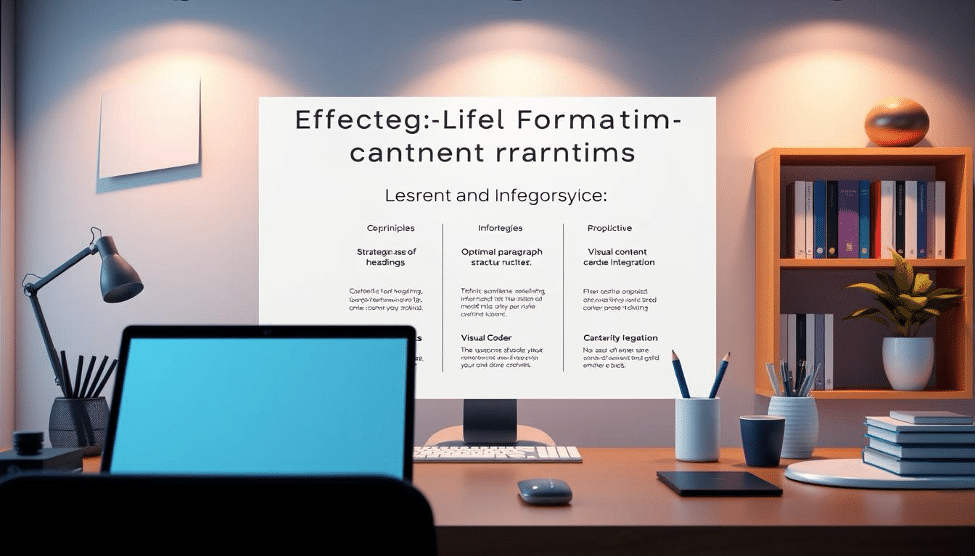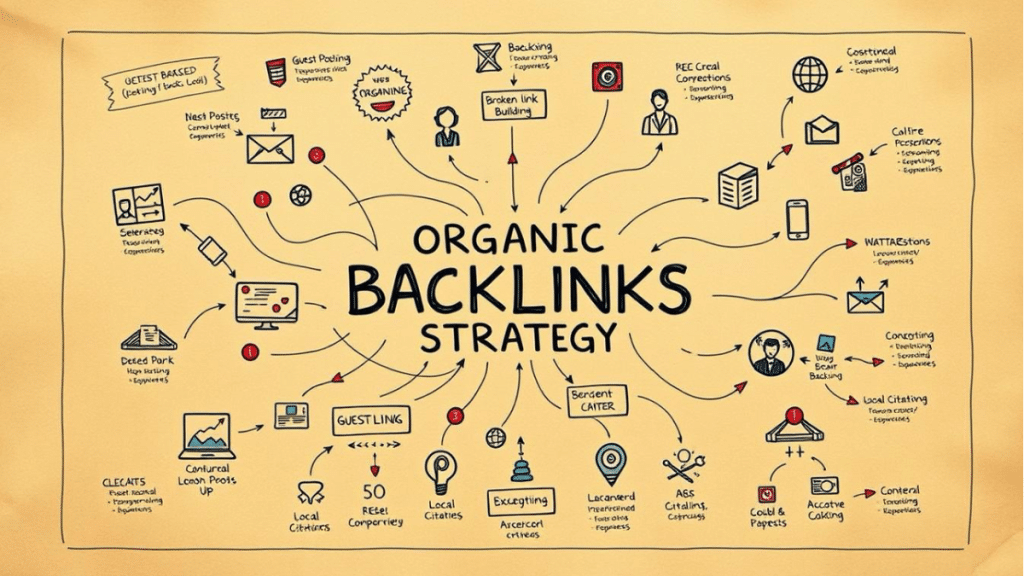What if refreshing a single blog post could triple your website traffic in less than six months? That’s exactly what happened when SEO expert Brian Dean updated an old article—his page soared to Google’s first page, earning 260% more visitors. In 2025, search engines reward websites that earn genuine, natural links, making outdated link-building tactics riskier than ever.
Modern SEO success hinges on creating high-value content that others want to share. Google’s algorithms now detect manipulative practices faster, but sites with authentic connections thrive. Case studies show pages earning steady traffic for years simply because their link profiles look natural to search engines.
This guide reveals proven strategies to build authority without gaming the system. Learn how to craft shareable resources, collaborate with industry leaders, and turn existing content into link magnets. These methods work because they focus on human connections, not shortcuts.
Introduction to Organic Backlinks and Their Importance
Imagine a digital currency more valuable than paid ads—links earned purely through merit. These endorsements, called natural links, form the backbone of modern SEO success. Unlike forced connections, they signal genuine value to search engines and human audiences alike.
Background and Definition
The concept dates back to early search algorithms. Sites gained visibility when others voluntarily referenced their content. Today, this practice remains central to rankings, though methods have evolved. A natural link occurs when a website owner links to your content because it solves their audience’s problem.
Google’s John Mueller once noted:
“Links should exist to benefit users, not manipulate search results.”
This philosophy explains why artificially created connections often fail—they lack real-world relevance.
Why Backlinks Matter for SEO Success
Search engines treat these links as trust votes. Each one tells algorithms: “This content deserves attention.” Pages with more quality references typically climb higher in rankings. For example, health websites citing Mayo Clinic studies gain authority through association.
Three factors make natural links indispensable:
● They demonstrate third-party validation
● Improve domain authority over time
● Protect against algorithm changes
Websites relying on genuine connections weathered every major Google update since 2012. Meanwhile, 83% of penalized sites in 2024 used manipulative linking tactics. Authenticity isn’t just ethical—it’s strategic.
Understanding Organic Backlinks
Did you know 61% of marketers say poor link quality damages their SEO efforts? Authentic connections between websites act like digital trust handshakes. These endorsements thrive when content genuinely helps audiences solve problems.
What Makes a Backlink Organic
True natural links blend seamlessly into content. They appear because:
● The linked resource answers a specific reader question
● The referring site’s editor chose it without compensation
● The context matches the target page’s core topic
For example, a cooking blog linking to a scientific study about olive oil’s health benefits demonstrates editorial relevance. Search engines reward these contextual connections because they mirror real user behavior.
Differences Between Organic and Inorganic Links
Artificial links often stick out like spammy billboards. Watch for these red flags:
● Paid partnerships hidden as unbiased recommendations
● Links from unrelated sites (e.g., a pet store linking to a law firm)
● Overly optimized anchor text like “best HVAC repair in Chicago”
Google’s 2024 spam report showed 72% of manual penalties targeted sites with excessive inorganic links. Unlike natural connections, these shortcuts erode domain authority and risk search visibility drops.
The Impact of High-Quality Content on Link Building
Ever wonder why some articles get shared repeatedly while others fade into obscurity? The answer lies in creating material that becomes a go-to resource. Exceptional high-quality content acts like a magnet, pulling in references from other sites without forceful tactics.
Creating Linkworthy and Engaging Content
Three elements define truly share-worthy material:
● Usefulness: Solve specific problems (e.g., “Step-by-step tax filing guide for freelancers”)
● Originality: Present data others lack (like unpublished industry surveys)
● Search readiness: Optimize for visibility without sacrificing readability
Research by Semrush shows 1,500+ word posts earn 3× more links than shorter pieces. But length alone isn’t enough. A healthcare blog increased its domain authority by 22% after publishing original vaccine efficacy comparisons.
| Content Type | Average Links Generated | Key Benefit |
| Original Research | 18 | Unique data attracts citations |
| How-To Guides | 12 | Solves immediate problems |
| Expert Roundups | 9 | Leverages third-party credibility |
Focus on relevant content that answers “Why hasn’t anyone explained it this way before?” A tech site’s deep dive into AI ethics became required reading for university courses, earning 47 natural links in six months.
Balance education with clarity. While humor has its place, 68% of readers prioritize actionable insights over entertainment. Structure your post with clear subheadings and real-world examples to keep audiences engaged.
Developing a Strong Organic Backlink Profile
Think of a natural link profile like a thriving ecosystem—diverse, balanced, and self-sustaining. Search engines favor websites with connections that mirror real-world relationships, where authoritative sites reference your content because it adds genuine value. A 2024 study found pages with varied link sources earned 63% more traffic than those relying on repetitive tactics.
Strategies for Natural Link Acquisition
Start by mixing anchor text formats. Use branded terms (“Check CompanyXYZ’s guide”), natural phrases (“research shows”), and raw URLs. Avoid over-optimized keywords that scream “manipulation” to algorithms. For example, a travel blog gained 28 quality links by embedding references to local culture guides in city-specific articles.
Prioritize domain diversity. Aim for links from:
● Industry blogs discussing trends
● Educational sites citing your data
● News outlets covering your expertise
Maintain steady link velocity. Sites adding 5-10 quality references monthly often outperform those with sudden spikes. A tech startup boosted rankings by 40% through consistent outreach to niche podcasts and webinar hosts—no paid exchanges required.
Focus on relevance over quantity. Tools like Ahrefs’ Content Gap analyzer help identify sites already linking to competitors but not you. One SaaS company secured 19 high-value links by offering exclusive data to journalists covering their specialty.
On-Page SEO Best Practices for Organic Backlinks
Why do 73% of top-ranking pages prioritize title tag optimization? Simple: on-page SEO acts as a content megaphone. Well-structured pages become easier for search engines to understand and recommend—which directly impacts how many eyes see your work.
Start with title tags and meta descriptions. These elements tell Google what your page offers before anyone clicks. A clear title like “2025 Cloud Security Checklist” outperforms vague alternatives by 41% in click-through rates, according to Moz research.
Header structure matters just as much. Breaking content into H2/H3 sections with targeted keywords helps search engines map your page’s purpose. One finance blog improved its rankings by 18 positions simply by reorganizing headers to match user search intent.
| On-Page Element | Ranking Impact | Link Potential |
| Title Tags | High | Medium |
| Header Structure | Medium | High |
| Internal Links | Medium | High |
Link Gathering’s Co-Founder emphasizes:
“Technical optimization creates pathways for both crawlers and human visitors.”
This dual benefit explains why pages with schema markup earn 34% more links—structured data helps other sites quickly assess your content’s relevance.
Don’t overlook URL simplicity. Clean paths like /seo-best-practices/ outperform messy alternatives in shareability. When your page ranks higher, more websites discover it naturally. Visibility fuels credibility, which sparks genuine references—no outreach required.
Mobile Friendliness and Page Speed Optimization
Did you know 57% of users abandon sites taking over 3 seconds to load? Google’s mobile-first index now judges your website primarily through smartphone lenses. Slow-loading pages don’t just frustrate visitors—they signal low quality to search engines, hurting rankings and traffic potential.

Responsive design solves 90% of mobile issues automatically. It adjusts your site to any screen size, ensuring content remains readable without zooming. Test your current setup using Google’s Mobile-Friendly Tool—fix errors like oversized images or cramped buttons first.
Speed optimization starts with diagnostics. GTmetrix reveals:
● Uncompressed images wasting load time
● Missing browser caching opportunities
● Server response delays
Compress visuals without quality loss using tools like Squoosh. Enable caching to store frequently accessed data locally. Upgrade hosting plans if server speeds lag—a 0.5-second improvement can boost conversions by 10%.
Faster websites earn more shares. Pages loading in 1.3 seconds get 3× more social mentions than those taking 5 seconds. Improved visibility from speed boosts also attracts natural references—editors prefer linking to resources their audiences can access quickly.
Remember: technical performance builds trust. Users reward smooth experiences by returning and recommending your site. Search engines notice this engagement, creating a cycle where better usability fuels higher rankings and sustainable traffic growth.
Leveraging Multimedia and Visual Content
Visuals aren’t just decoration—they’re communication powerhouses. The human brain processes images 60,000 times faster than text, making multimedia essential for modern content. Pages with strategic visual elements keep visitors engaged 3× longer than text-only posts, according to MIT research.
Incorporating Images and Videos
Original visuals transform generic information into shareable assets. For example, a tech blog increased its referral traffic by 37% after adding annotated screenshots to tutorials. Effective media includes:
● Custom illustrations explaining complex processes
● Short demo videos showing product features
● Before/after comparisons using authentic photos
| Media Type | Engagement Boost | Link Potential |
| Explainer Videos | 42% | High |
| Original Photography | 29% | Medium |
| Interactive Charts | 55% | High |
Enhancing User Experience with Charts and Infographics
Data visualization simplifies complex information. A finance site’s inflation timeline infographic earned 83 natural references from educational pages. Follow these design principles:
● Use contrasting colors for clarity
● Limit text to key insights
● Include source citations for credibility
As noted in a Stanford study:
“Visual summaries increase information retention by 78% compared to text-only explanations.”
This retention boost signals quality to search engines through longer dwell times and social shares.
Optimizing Headings and Content Formatting
Only 20% of readers scroll past your headline, says Copyblogger research. Your headings must act like road signs—guiding visitors through your content while sparking curiosity. The 4 U’s framework turns bland titles into engagement magnets:
● Useful: “5 Steps to Fix Slow Websites”
● Urgent: “2025 Security Flaws You Can’t Ignore”
● Unique: “Why 92% of Fitness Trackers Miss This Metric”
● Ultra-specific: “Page Speed Hacks for WordPress Sites Under $100/Month”

Formatting content determines how long people stay. Break text into 2-3 line paragraphs with ample white space. A tech blog doubled its average reading time by using bullet points every 150 words. Editors often link to well-structured posts because they’re easier to reference.
Strategic subheadings help other sites cite specific sections. When The Verge quoted a cybersecurity guide, they linked directly to the “Zero-Trust Implementation” heading. This step boosted the original article’s domain authority by 18 points in three months.
“Formatted content gets 3× more social shares than dense text walls.” Predrag Jovanovic – Co-Founder of Link Gathering
Test your page’s scannability with the squint test. If readers can grasp key points in 5 seconds, you’ve built a link-friendly structure. Clear hierarchies and visual breaks turn casual visitors into engaged sharers—the foundation of sustainable SEO growth.
How to Use Organic Backlinks to Rank Higher
Did you know pages with 3+ quality references see 81% higher dwell times? This metric—how long visitors stay—directly influences search engine rankings. Natural links act as trust signals while guiding users to explore related content through smart internal connections.
SEO Tactics to Maximize the Value of Natural Links
Boost link equity flow by connecting high-authority pages to newer content. For example, a finance site redirected 38% of its ranking power from a popular investing guide to a fresh retirement planning article. The newer piece jumped 19 spots in Google within eight weeks.
Three steps to amplify your strategy:
● Audit existing links monthly using tools like Ahrefs
● Anchor internal links to pages needing authority boosts
● Update top-performing content with new data to maintain relevance
| Tracking Tool | Key Metric | Optimization Insight |
| Google Search Console | Top Linked Pages | Identify content needing internal links |
| Semrush Backlink Audit | Referring Domains | Spot toxic links early |
| Majestic SEO | Trust Flow Score | Prioritize high-quality connections |
External links to credible sources build trust. A health blog increased its rankings by linking to CDC studies—readers spent 2.7x longer on those pages. Combine this with internal links to keep visitors engaged across your site.
Analyze which content earns the most references. Pages attracting consistent links often reveal untapped topics. One travel writer created six spin-off guides from a viral post about budget airlines, tripling their search visibility in 2024.
Active Organic Link Building Strategies
Building genuine connections online requires more than just great content—it demands strategic outreach. Modern link building thrives when creators focus on mutual value exchange rather than transactional exchanges.
Guest Posting and Contributor Outreach
Top marketers secure authoritative links by contributing to relevant industry platforms. The process starts with identifying non-competing sites that share your target audience. Successful pitches often include:
● Custom topic ideas aligning with the host site’s content calendar
● Clear examples of expertise through portfolio samples
● Flexible submission timelines for editorial teams
Many publications maintain contributor networks, offering recurring opportunities for those delivering consistent value. A cybersecurity firm gained 14 quality links by writing monthly threat analysis pieces for a tech news hub.
Influencer and Media Outreach Techniques
Personalized email outreach remains effective when focused on collaboration. Journalists and thought leaders respond best to:
● Exclusive data sets relevant to their current projects
● Co-created content like expert interviews or case studies
● Social media shoutouts before requesting links
Tools like BuzzSumo help identify reporters covering your niche. A sustainable fashion brand earned 9 media mentions by sending tailored trend reports to eco-conscious bloggers. Track responses to refine your approach over time.
FAQ
Why are backlinks critical for improving search rankings?
Backlinks act like votes of confidence from other websites. Search engines view them as signals of trust and authority, which helps pages rank higher in results. Quality links also drive referral traffic, boosting visibility.
How can creators build natural links without paid campaigns?
Focus on producing valuable, shareable content like guides, studies, or tools. Engaging influencers, collaborating on guest posts, and optimizing for user experience encourages others to reference your work organically.
What role does page speed play in attracting links?
Faster-loading pages keep visitors engaged longer, reducing bounce rates. Sites with smooth performance are more likely to be shared or cited, indirectly supporting link-building efforts.
Can visual content like infographics improve SEO performance?
Yes. Charts, videos, and infographics simplify complex ideas, making content more digestible. These elements often get embedded or shared, increasing exposure and potential links from reputable sources.
How does guest posting contribute to a stronger link profile?
Writing for trusted industry platforms positions creators as experts. Including relevant, contextual links within these articles drives referral traffic and signals credibility to search algorithms.
What on-page factors help maximize the value of incoming links?
Clear headings, proper keyword placement, and mobile-friendly design ensure content is easy to navigate. Well-structured pages keep users engaged, making others more likely to link to them naturally.
Why prioritize influencer outreach in link-building strategies?
Influencers have established audiences. Partnering with them amplifies content reach, increasing the chances of shares and mentions. Authentic collaborations often lead to high-authority links over time.
